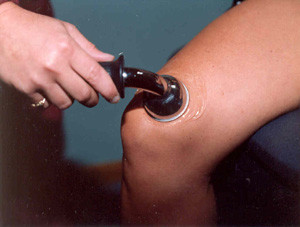|
BOOK NOW |
ASK ABOUT YOUR PAIN |
Home > Blog > Physiotherapy > Osteoarthritis Physio
Osteoarthritis And Physiotherapy

Osteoarthritis is a very common form of arthritis, and unfortunately is also a very big cause of long term impairment and disability. Osteoarthritis is a degenerative joint disease that is registered under mechanical degradation of joints and joints tissue.
The classic symptoms of a patient with osteoarthritis will include
- pain within the affected joint
- joint stiffness
- 'locking' of the knee
- tenderness to the touch.
When our joint cartilage wears off due to wear and tear (or due to infections and trauma), what happens is that the bone surfaces of the bones that make the joint becomes exposed to physical trauma (because the joint cartilages serve as shock absorbers - without these shock absorbers, then the shock/load goes directly to the bones).
This leads to damage to pain, and in turn, the patient will limit the
movement of the joint, which in turn causes muscle atrophy and ligamental
laxity. This creates a vicious cycle, and that's why patients with osteoarthritis will benefit a lot from direct active physiotherapy and hand therapy interventions.
Therapy treatments involves a combination of
- exercise therapy
- activity/lifestyle changes and modifications
- painkillers to lessen or manage the pain
If the joint pain that the patient experiences becomes overpowering, patients who have less surgical risk often can choose to undergo joint replacement surgery such as hip replacement or knee replacement of the joint with osteoarthritis.
Signs And Symptoms of osteoarthritis
Other osteoarthritis symptoms include
- pains (aching, pulling, burning) in joint and surrounding joint structures
- decreased/loss of joint movement
- decreased function
- decreased use due to pain and/or fear of pain
Sometimes patients may notice that there may be cracking noise in their affected joints (termed as crepitus) and this is sometimes paird with muscle spasms. Some patients with osteoarthritis also often report that they can "feel" joint differences in warm versus cold weather e.g. moving from a cold room to a hot room or vice versa will result in a cramping ache.
Most of the time, osteoarthritis affects first the joints that are:
- more load/weight-bearing
- more used
Such as knees, hips, shoulders and hands. As osteoarthritis is a progressive condition (ie gets worse over time and with use),
the affected joints start to become larger, becoming increasingly more painful and decreasing in
mobility. This distinguishes it from its similar cousin, rheumatoid arthritis, that usually improves with time.
Sometimes, in smaller joints such as the joints of the hands and fingers, Heberden's nodes can form on the end finger joint, and Bouchard's nodules can form on the joints just after the knuckles. They are not always painful, but they can decrease/restrict the movement of the fingers.
Causes Of Osteoarthritis
There are two types of osteoarthritis: primary and secondary.
Primary osteoarthritis refers to the the chronic degenerative disorder that is related by is not primarily caused by aging (some people in their 80+ or 90+ have no OA at all). Over time, the cartilages in our joints shrink, and becomes less resilient.
Secondary osteoarthritis is caused by a variety of factors, but ends up with the same pathological results as of the primary osteoarthritis.
Some of the causes of secondary osteoarthritis are:
- Joint disorders
- Diabetes mellitus
- Any/all forms of inflammatory/arthritic diseases
- Direct trauma such as falls, accidents and injuries
- Joint infections
- Ligamental laxity or instability
- Obesity
- Other syndromes such as marfan's syndrom and wilson's disease
osteoarthritis Treatments
We recommend a holistic combination of treatment approaches and modalities for a more effective outcomes. Lifestyle changes and modification such as adopting a more active lifestyle of healthy eating, exercise and weight loss), combined with careful use of painkillers are some of the long term solutions.
What our senior physiotherapists and hand therapists do for patients with osteoarthritis aims to help to improve function, increase strength and mobility, decrease pain and delay the need for invasive surgery.

Physiotherapy and exercise therapy that is prescribed is documented to be more effective than that of a pure pharmaceutical approach (ie just taking medicine and painkillers wont solve this problem for the long term).
Some of the areas our senior physiotherapists will target include
- pain relief
- soft tissue management
- heat therapy to loosen up tight joints and structures around the stiff joint
- manual therapy
- ultrasound therapy and radio-frequency Indiba physiotherapy to accelerate soft tissue healing
- balance training
- gait correction re-training
Hand therapists often prescribe custom-made splints to prevent aggravation and deformities.
More Information on Osteoarthritis: